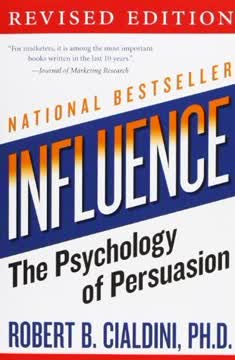Key Takeaways
1. Recognize that shyness is common and can be overcome
Shyness is a curse. Shyness makes me feel like I am an unwanted guest in everyone else's world.
Shyness affects many. About 13% of people in Western countries are lifetime Shys, while 80% say they have experienced shy periods in their lives. This prevalence demonstrates that shyness is a common human experience, not a personal flaw.
Shyness is not permanent. Like any other skill, social confidence can be developed through practice and persistence. Many successful and charismatic individuals have overcome their shyness, proving that it's possible to transform from shy to confident.
Recognizing shyness is the first step. Understanding that your shyness is a challenge to be overcome, rather than an inherent personality trait, empowers you to take action and make positive changes in your life.
2. Gradually expose yourself to social situations
Gradual exposure guides patients to confront feared situations and allows their fear to dissipate naturally.
Start small. Begin with low-pressure social interactions, such as smiling at strangers or making brief eye contact. Gradually increase the difficulty of these interactions as your comfort level grows.
Use the "Simplest to Scariest" approach. Create a hierarchy of social situations, ranging from least to most intimidating. Work your way up this ladder at your own pace, celebrating each small victory along the way.
Practice consistently. Set daily or weekly goals for social exposure, such as:
- Asking a stranger for directions
- Complimenting someone you don't know well
- Joining a casual conversation at work
- Speaking up during a meeting
3. Develop confidence through body language and voice
If she looks like a Sure, sounds like a Sure, and acts like a Sure, she must be sure of herself.
Fake it till you make it. Your mind and body strive for consistency. By adopting confident body language and vocal patterns, you can trick your mind into feeling more confident.
Key body language techniques:
- Stand tall with shoulders back
- Make eye contact
- Use open gestures
- Take up space
- Smile genuinely
Voice improvements:
- Speak with more volume and resonance
- Reduce hesitations and filler words
- Slow down your speech
- Practice deep breathing for a calmer voice
4. Practice social skills in low-pressure environments
Being somebody else on stage does wonders for playing the most important role of your life – your most extroverted self.
Utilize anonymity. Practice social skills in places where you're unlikely to encounter familiar faces, such as neighboring towns or while traveling. This reduces the pressure of potential judgement from people you know.
Take on roles. Volunteer for positions that require interaction, such as being a tour guide, working at a help desk, or participating in community theater. These roles provide a structure for social interaction and can help build confidence.
Create practice opportunities:
- Join a club related to your interests
- Attend workshops or classes
- Volunteer for local organizations
- Participate in online forums or social media groups
5. Cultivate self-knowledge and passion to combat shyness
Find your passion and your purpose.
Develop self-awareness. Spend time reflecting on your values, beliefs, and interests. This self-knowledge provides a foundation for confident self-expression in social situations.
Pursue your passions. When you're passionate about a topic, your enthusiasm can override shyness. Engage in activities and discussions related to your interests to build confidence and connections with like-minded individuals.
Use passion to fuel social interactions:
- Join groups or clubs related to your interests
- Attend events or conferences in your field of passion
- Share your knowledge and experiences with others
- Use your expertise as a conversation starter
6. Understand the origins of your shyness
Approximately one-third of babies' body chemistry makes them extra sensitive to unfamiliar events and people, and therefore more susceptible to becoming shy.
Explore genetic factors. Some individuals may have a genetic predisposition to shyness, with about 20-30% of babies born with a more sensitive temperament.
Consider environmental influences. Childhood experiences, parenting styles, and traumatic social events can contribute to the development of shyness.
Potential origins of shyness:
- Highly Sensitive Person (HSP) temperament
- Overprotective or critical parenting
- Bullying or social rejection in childhood
- Lack of early socialization opportunities
- Cultural factors that discourage assertiveness
7. Build relationships and find supportive friends
Having at least one high-quality friendship before the age of 10 was associated with a greater sense of classmate support, decreased anxiety and improved self-worth, even among shy [children].
Seek quality over quantity. Focus on developing a few deep, meaningful friendships rather than trying to be popular with everyone.
Find supportive individuals. Surround yourself with people who understand and accept your shyness, while also gently encouraging you to step out of your comfort zone.
Strategies for building relationships:
- Join groups or clubs aligned with your interests
- Nurture existing acquaintanceships into deeper friendships
- Be vulnerable and open with trusted individuals
- Offer support and kindness to others
- Practice active listening and empathy
8. Manage anxiety in social situations
By using safety behaviors to 'play it safe' in social situations, socially anxious individuals found that ... they could not perform adequately without the safety behaviors.
Recognize anxiety symptoms. Understand how anxiety manifests in your body and mind, such as rapid heartbeat, sweating, or racing thoughts.
Develop coping strategies. Learn and practice techniques to manage anxiety in the moment, such as deep breathing, progressive muscle relaxation, or mindfulness exercises.
Challenge negative thoughts:
- Identify cognitive distortions (e.g., mind-reading, catastrophizing)
- Question the evidence for your anxious thoughts
- Replace negative self-talk with more realistic, positive statements
- Focus on the present moment rather than worrying about future outcomes
9. Improve communication skills through acting and practice
One of the things that I think really helped my shyness was when my best friend joined the drama club at school and wanted me to join, too.
Try acting classes. Acting allows you to practice confident body language, vocal projection, and emotional expression in a structured environment.
Role-play social scenarios. Practice common social situations with a trusted friend or family member to build confidence and develop strategies for handling different interactions.
Communication skill-building exercises:
- Practice improvisational speaking on random topics
- Record yourself speaking and analyze your body language and voice
- Join a public speaking club like Toastmasters
- Engage in debates or discussions on topics you're passionate about
10. Embrace your unique qualities as a shy person
The majority of gifted children (60%) are introverts. In studies of intelligence, the higher the IQ, the higher the percentage number of introverts.
Recognize the strengths of shyness. Shy individuals often possess valuable qualities such as empathy, thoughtfulness, and keen observation skills.
Reframe shyness as sensitivity. Many shy people are highly sensitive, which can be an asset in various personal and professional contexts.
Positive traits often associated with shyness:
- Deep thinking and analysis
- Strong listening skills
- Creativity and imagination
- Heightened empathy and emotional intelligence
- Ability to form deep, meaningful relationships
Last updated:
FAQ
What's "How to Feel Confident: Simple Tools for Instant Success" about?
- Focus on Shyness: The book is a comprehensive guide to overcoming shyness and building confidence, specifically targeting those who struggle with social anxiety.
- Practical Tools: It offers 66 "Confidence Boosters," which are practical exercises and strategies designed to help readers gradually overcome their shyness.
- Personal Experience: The author, Leil Lowndes, shares her personal journey from being painfully shy to becoming a confident public speaker, providing relatable anecdotes and insights.
- Research-Based: The book is grounded in research from sociology, psychology, and other fields, making it a credible resource for those seeking to understand and combat shyness.
Why should I read "How to Feel Confident: Simple Tools for Instant Success"?
- Overcome Shyness: If you struggle with shyness or social anxiety, this book provides actionable steps to help you gain confidence.
- Expert Advice: Leil Lowndes is a renowned communications expert, and her insights are backed by research and personal experience.
- Comprehensive Approach: The book covers a wide range of scenarios and offers specific strategies for different social situations.
- Empowerment: It empowers readers to take control of their social interactions and improve their personal and professional relationships.
What are the key takeaways of "How to Feel Confident: Simple Tools for Instant Success"?
- Gradual Exposure: The book emphasizes the importance of gradually exposing oneself to feared social situations to build confidence.
- Self-Knowledge: Understanding your own shyness and its origins is crucial for overcoming it, as highlighted in the book.
- Practical Exercises: The 66 Confidence Boosters are practical exercises that readers can implement in their daily lives to reduce shyness.
- Positive Mindset: Developing a positive mindset and focusing on personal strengths are key components of the book's approach to building confidence.
What are the best quotes from "How to Feel Confident: Simple Tools for Instant Success" and what do they mean?
- "Shyness is a curse. Shyness makes me feel like I am an unwanted guest in everyone else’s world." This quote captures the isolating nature of shyness and the feeling of being an outsider.
- "Do the thing you fear most and the death of fear is certain." This quote, attributed to Mark Twain, emphasizes the book's theme of facing fears to overcome them.
- "I’ll just keep faking it till I make it." This highlights the strategy of acting confident until it becomes a natural part of one's behavior.
- "Passion makes you forget being shy." This suggests that focusing on something you love can help you overcome self-consciousness and shyness.
How does "How to Feel Confident: Simple Tools for Instant Success" suggest dealing with social anxiety?
- Graduated Exposure Therapy: The book recommends gradually exposing oneself to social situations that cause anxiety, starting with less intimidating scenarios.
- Self-Reflection: It encourages readers to reflect on their shyness and understand its roots, which can help in addressing it effectively.
- Role-Playing: Acting classes and role-playing are suggested as ways to practice social interactions in a controlled environment.
- Positive Reinforcement: Celebrating small victories and progress in social situations is emphasized as a way to build confidence.
What is the "Confidence Booster" method in "How to Feel Confident: Simple Tools for Instant Success"?
- Practical Exercises: The Confidence Boosters are practical exercises designed to help readers gradually overcome shyness.
- Variety of Scenarios: They cover a wide range of social situations, from making eye contact to attending parties.
- Step-by-Step Approach: Each booster is a step towards building confidence, starting with simpler tasks and progressing to more challenging ones.
- Research-Backed: The boosters are based on research and have been proven effective in helping people reduce social anxiety.
How does Leil Lowndes use personal experience in "How to Feel Confident: Simple Tools for Instant Success"?
- Relatable Stories: Lowndes shares her own experiences with shyness, making the book relatable and encouraging for readers.
- Success Journey: Her journey from a shy individual to a confident public speaker serves as a testament to the effectiveness of her methods.
- Empathy and Understanding: Her personal anecdotes demonstrate empathy and understanding of the struggles faced by shy individuals.
- Inspiration: Her success story inspires readers to believe that overcoming shyness is possible with dedication and the right strategies.
What research supports the strategies in "How to Feel Confident: Simple Tools for Instant Success"?
- Sociology and Psychology: The book draws on research from sociology and psychology to provide a scientific basis for its strategies.
- Expert Contributions: It references studies by renowned researchers like Philip Zimbardo and Jerome Kagan, who have extensively studied shyness.
- Evidence-Based Techniques: Techniques like Graduated Exposure Therapy are supported by research and have been shown to be effective in reducing social anxiety.
- Comprehensive References: The book includes references to studies and experts, providing readers with additional resources for further exploration.
How does "How to Feel Confident: Simple Tools for Instant Success" address the fear of rejection?
- Reframing Rejection: The book encourages readers to reframe rejection as a learning experience rather than a personal failure.
- Building Resilience: It emphasizes building resilience by gradually exposing oneself to situations where rejection is possible.
- Positive Self-Talk: Encourages the use of positive self-talk to counteract negative thoughts associated with rejection.
- Supportive Community: Suggests finding a supportive community or friends who understand and can help navigate feelings of rejection.
What role does self-knowledge play in "How to Feel Confident: Simple Tools for Instant Success"?
- Understanding Origins: Self-knowledge helps readers understand the origins of their shyness, which is crucial for overcoming it.
- Personal Reflection: The book encourages personal reflection through self-interview questions to gain deeper insights into one's personality.
- Empowerment: Knowing oneself better empowers individuals to make informed decisions about their social interactions.
- Confidence Building: Self-knowledge is a foundation for building confidence, as it helps individuals recognize and leverage their strengths.
How does "How to Feel Confident: Simple Tools for Instant Success" suggest improving communication skills?
- Eye Contact: Emphasizes the importance of making eye contact to convey confidence and engage effectively in conversations.
- Active Listening: Encourages active listening and responding to others, which helps build rapport and improve communication.
- Voice Modulation: Suggests practicing voice modulation to ensure clarity and confidence in speech.
- Role-Playing: Recommends role-playing exercises to practice and improve communication skills in a safe environment.
What are the potential pitfalls in relationships for shy individuals according to "How to Feel Confident: Simple Tools for Instant Success"?
- Fear of Rejection: Shy individuals may fear rejection, leading to avoidance of potential relationships.
- Over-Reliance on Partner: There is a risk of becoming overly dependent on a partner for validation and self-worth.
- Communication Challenges: Shyness can lead to communication challenges, making it difficult to express needs and desires in a relationship.
- Awareness and Strategies: The book provides strategies to navigate these pitfalls, emphasizing the importance of self-awareness and communication.
Review Summary
How to Feel Confident receives mixed reviews, with an average rating of 3.61/5. Many readers find it helpful for overcoming shyness, praising its practical tips and relatable examples. Some appreciate the author's personal experience with shyness. However, critics argue the book is too focused on extreme shyness, making it less relevant for those seeking general confidence-building. The writing style and structure are debated, with some finding it engaging and others repetitive. Overall, it's considered most beneficial for individuals struggling with severe shyness.
Similar Books










Download PDF
Download EPUB
.epub digital book format is ideal for reading ebooks on phones, tablets, and e-readers.












